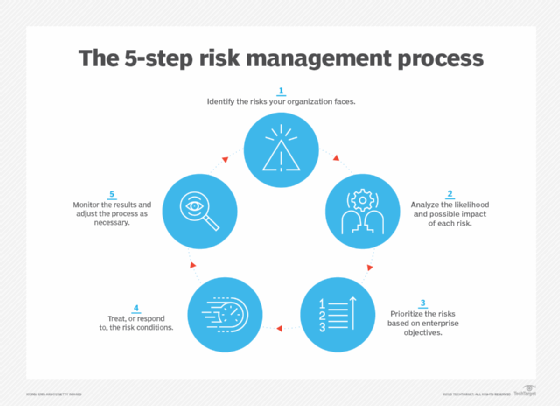The Rising Importance of Risk Management in Medical and Safety
The Rising Importance of Risk Management in Medical and Safety
Blog Article
The Crucial Relevance of Risk Management in Achieving Organizational Goals
In the swiftly evolving company landscape, the capacity to browse uncertainty has actually come to be an essential. This is where Risk Management actions in, offering a structured approach to determining, examining, and mitigating prospective obstacles to progress. It's greater than simply a safety measure - it's a strategic tool, fostering durability and advancement. As we check out the critical duty of Risk Management in attaining organizational objectives, one can not question but help: just how does this convert into real-world success?
Understanding the Principle of Risk Management in Service

The Essential Duty of Risk Management in Strategic Planning
Integrating Risk Management right into critical planning acts as a guard for organizations, securing their long-lasting strategies with a strong structure of readiness and resilience. Risk Management offers a framework for preparing for unpredictabilities and devising suitable responses, making sure the company's survival and prosperity even in the face of adversity. By incorporating Risk Management right into critical preparation, companies can change these unpredictabilities right into opportunities for development and technology.

Methods for Identifying, Assessing, and Focusing On Risks
The procedure begins with Risk identification, using devices such as SWOT evaluation, which helps in identifying possible threats and you could look here possibilities. Next, Risk analysis is conducted to identify the potential effect and likelihood of each Risk. Risks are focused on based on their prospective influence and chance, enabling organizations to focus their sources on high-priority dangers.
Protecting Business Workflow Via Efficient Risk Management
In the business landscape laden with unpredictabilities, efficient Risk Management plays an essential function in protecting business operations. By identifying and assessing prospective risks, Risk Management enables companies to establish durable contingency strategies. Organizations need to spend in extensive Risk Management approaches to protect their procedures.

Converting Prospective Risks to Opportunities: The Power of Risk Management
While potential threats might originally appear as obstacles to business success, effective Risk Management can transform them into opportunities. An aggressive approach to take the chance of Management involves recognizing, examining, and focusing on dangers to develop methods that turn them into prospective advantages. This procedure necessitates the development of a risk-aware culture within the company, motivating individuals to see threats as prospective stimulants for change and development, rather than plain hazards. importance of risk management. With this lens, possible hazards come to be opportunities to innovate, improve procedures, and reinforce durability. Thus, by leveraging the power of Risk Management, organizations can not just guard their procedures yet likewise spur development and achieve their objectives in an unpredictable business setting.
Case Researches: Success Stories of Risk Management Driving Company Objectives
Successful implementation of Risk Management techniques site web has yielded outstanding outcomes in various companies, emphasizing the advantages of this strategy. International firms like Microsoft and Google, for circumstances, have actually leveraged Risk Management to decrease threats and make use of opportunities, driving their business purposes onward. These examples illustrate how effective Risk Management can not only guide companies clear of prospective pitfalls but also direct them towards their tactical goals.
Conclusion
In final see post thought, Risk Management is essentially crucial in accomplishing business objectives. It provides a systematic technique to recognizing, evaluating, and attending to potential threats and chances. Even more than simply mitigating risks, it also fosters innovation, durability, and sustainable development. By integrating Risk Management right into strategic preparation, businesses can much better navigate uncertainties, protect procedures, and capitalise on opportunities, therefore aligning with long-term goals.
At its core, Risk Management is the procedure of recognizing, analyzing, and attending to possible threats that might negatively affect a company's goals or procedures. Next, Risk analysis is conducted to identify the potential impact and chance of each Risk. Dangers are focused on based on their prospective impact and chance, enabling companies to focus their resources on critical dangers. By identifying and examining prospective risks, Risk Management allows organizations to establish durable backup strategies. A proactive strategy to risk Management includes identifying, assessing, and prioritizing threats to create strategies that transform them right into prospective benefits.
Report this page